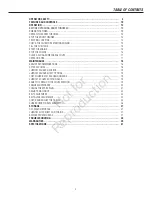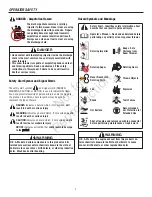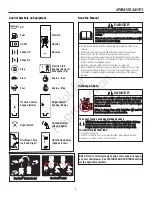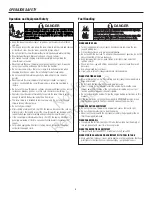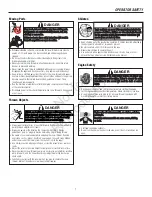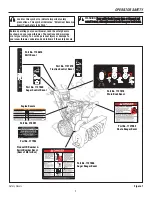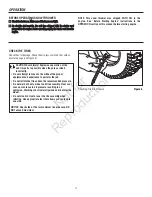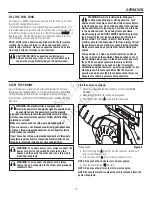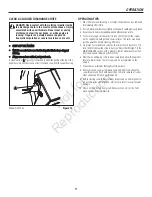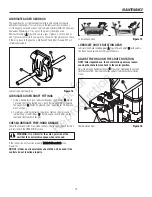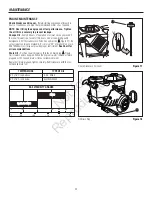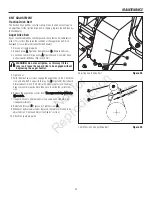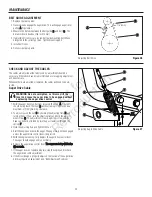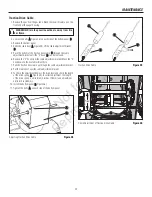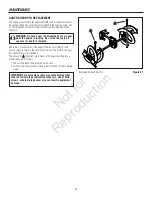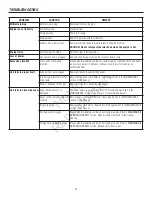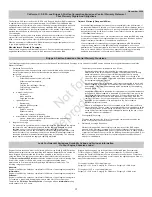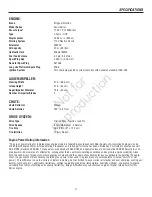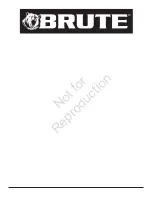
17
17
CLEAR A CLOGGED DISCHARGE CHUTE
DANGER: Hand contact with the rotating impeller inside
the discharge chute is the most common cause of injury
associated with snow throwers. Never clear or unclog
discharge chute with your hands, or while engine is
running. Fingers can quickly become caught and
traumatic amputation or severe laceration can result.
OPERATING TIPS
1. Most efficient snowthrowing is accomplished when snow is removed
immediately after it falls.
2. For complete snow removal, slightly overlap each swath previously taken.
3. Snow should be discharged downwind whenever possible.
4. For normal usage, set the skids 1/8 inch (3 mm) below the scraper
bar. For extremely hard-packed snow surfaces, the skids may be ad-
justed upward to ensure cleaning efficiency.
5. On gravel or crushed rock surfaces, the skids should be set at 1-1/4
inch (32 mm) below the scraper bar (see “Adjust Skid Height” in the
MAINTENANCE section of this manual). Rocks and gravel must not
be picked up and thrown by the machine.
6. After the snowthrowing job has been completed, allow the engine to
idle for a few minutes, to melt snow and ice accumulated on the
engine.
7. Clean the snow thrower thoroughly after each use.
8. Remove ice and snow accumulation and all debris from the entire
snow thrower, and flush with water (if possible) to remove all salt or
other chemicals. Wipe snow thrower dry.
9. Before starting snow thrower, always inspect augers and impeller for
ice accumulation and/or debris, which could result in snow thrower
damage.
10. Check oil level before every start. Make sure the oil is at the FULL
mark on the oil fill cap/dipstick.
Clean-Out Tool
Figure 13
A
• SHUT OFF THE ENGINE!
• Wait 10 seconds to be sure that the impeller blades have stopped
rotating.
• Always use a clean-out tool, not your hands.
A clean-out tool (A
A, Figure 13) is attached to either the handle or the top of the
auger housing. Use the clean-out tool to remove snow from the auger housing.
OPERATION
Not
for
Reproduction

